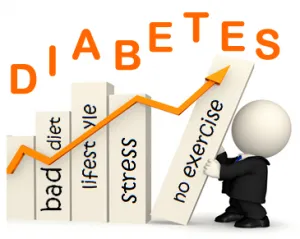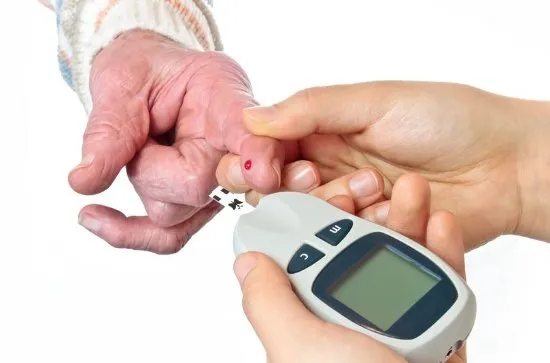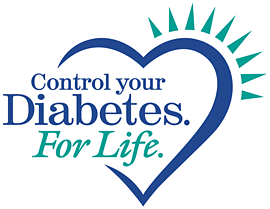
What is diabetes?
Diabetes is a disorder of metabolism (metabolism means the processes by which our body uses digested food for growth and for energy). Most foods we eat are broken down to glucose, which is the form in which there is sugar in the blood. Glucose is the main fuel source for the body.
After digestion, glucose passes into the bloodstream, where it is used by cells for growth and for energy. Because the glucose can penetrate into cells need this insulin. Insulin is a hormone produced by the pancreas, a gland that is located behind large stomach.
When we eat, the pancreas automatically produces the appropriate amount of insulin to move glucose into the blood located inside our cells. In people with diabetes, however, the pancreas either produces too little insulin or cells at all or do not respond adequately to the insulin that is secreted. Thus, the body loses its main source of fuel even though the blood contains large amounts of sugar.

source: arredamentiterrosi,com
What are the types of diabetes?
The three types of diabetes are:
- Type 1 diabetes;
- Type 2 diabetes;
- Gestational diabetes (pregnancy).
Type 1 diabetes
Type 1 diabetes is an autoimmune disease. An autoimmune disease occurs when the body's defense system (immune system), whose role is defensive antibiotic, turns against a part of the body. In diabetes, the immune system attacks the insulin-producing beta cells, located in the pancreas and destroys them. Thus, the pancreas produces little or no insulin amounts.
A person with type 1 diabetes must take insulin daily to survive. Currently, scientists do not know exactly what causes the body's immune system to attack beta cells, but it believes are involved in autoimmune factors, genetic and environmental, and viral possible.
Type 1 diabetes occurs in about 5 to 10% of all cases of diabetes. It develops most often in children and young adults but can occur at any age. Type 1 diabetes symptoms usually appear after a short period, although beta cell destruction can occur years before. Symptoms include increased urination and thirst, hunger permanent weight loss, blurred vision and extreme fatigue. If not diagnosed and treated with insulin, a person with type 1 diabetes can lead to diabetic coma, life-threatening, known as diabetic keto-acidosis.
Type 2 diabetes
The most common form of diabetes is type 2 diabetes. Approximately 90-95% of all people with diabetes have type 2. This form of diabetes is associated with older age, obesity, family history of diabetes, previous history of diabetes gestational, physical inactivity and ethnicity. About 80% of people with type 2 diabetes are overweight.
Type 2 diabetes is increasingly diagnosed more frequently in children and adolescents. About 3700 people aged under 20 are diagnosed with diabetes, according to research from 2002-2003.
When type 2 diabetes is diagnosed, the pancreas is usually producing enough insulin, but for unknown reasons, the body can not use insulin effectively, a condition called insulin resistance. After several years, insulin production decreases. The consequence is the same as Type 1 diabetes - increases the amount of glucose in the blood and the body can not effectively use it to its main source of fuel.
Symptoms of type 2 diabetes develop gradually. His debut is not as sudden as in type 1 diabetes symptoms may include fatigue or nausea, frequent urination, unusual thirst, weight loss, vision, frequent infections and slow healing of wounds or wound. Some people have no symptoms.
Gestational diabetes
Gestational diabetes occurs during pregnancy. Also with type 2 diabetes occurs more often in African Americans, Indian, Hispanic and women with a family history of diabetes. Women who have had gestational diabetes have a risk of 20 to 50% of developing type 2 diabetes in the next 5-10 years.
What are the tests to diagnose diabetes?
Test to measure blood glucose (plasma) fasting is the standard test for diagnosing diabetes type 1 or 2. It is safest when done in the morning on an empty stomach. The value of blood glucose levels (plasma) is known as glucose.

source ltlmagazine,com
However, the diagnosis of diabetes can be made if positive results are obtained from any of these three tests, plus confirmation by a second positive test, obtained in another day later:
- A blood sugar level (taken any time of day) 200 mg / dL or more, along with the presence of symptoms of diabetes;
- A blood glucose of 126 mg / dL or higher after a period of 8 hours in which the person has not eaten anything;
- A test oral glucose tolerance with a blood glucose value of 200 mg / dL or more in a sample of blood collected at 2 hours after the person has ingested a glass of water in which was dissolved 75 grams of glucose . This test, which is done in a laboratory or doctor's office, measures plasma glucose at fixed intervals over a period of 3 hours.
Gestational diabetes is diagnosed based on plasma glucose values
measured in the oral glucose tolerance test. During pregnancy, normal blood sugar level is low, so pull values
for the diagnosis of diabetes are below. If a pregnant woman has two values
in plasma glucose that reach or exceed any of the figures Next, she has gestational diabetes: a fasting plasma glucose of 95 mg / dL in 1 hour after meals de180 mg / dL at 2 hours of 155 mg / dL at 3:00 of 140 mg / dL.
What are the other types of disorders of glucose metabolism, known as pre-diabetes?
People with pre-diabetes, a condition between "normal" and "diabetes" have an increased risk of developing diabetes, heart attacks and strokes. However, a recent study suggests that weight loss and increased physical activity can prevent or delay the onset of diabetes as well as weight loss and physical activity may increase insulin sensitivity in the body.
There are two forms of pre-diabetes:
1. glucose metabolism disorder after a period of fasting
A person has the disorder of glucose metabolism after a period of fasting when fasting plasma glucose is between 100 and 125 mg / dL. This level of blood glucose is higher than normal but lower than that indicates a diagnosis of diabetes.
2. impaired glucose tolerance
Impaired glucose tolerance means that blood glucose oral glucose tolerance test is higher than normal but not high enough to diagnose diabetes.
It is diagnosed when blood glucose levels are between 140 and 199 mg / dL at 2 hours after the person ingests a liquid containing 75 grams of glucose. An estimated 57 million people aged over 20 years have disorders of glucose metabolism, suggesting that at least as many adults will have pre-diabetes in the near future.
What is the impact of diabetes?
Diabetes is a leading cause of death and disability. In 2006, it was ranked 6th among diseases that cause death. However, it is assumed that diabetes is most likely underdiagnosed as a cause that actually sit at the base of death on death certificates.
Diabetes is associated with long-term complications that affect almost every part of the body. The disease often leads to blindness, heart disease and blood vessels, stroke, kidney failure, amputations and nerve impairment. Uncontrolled diabetes can lead to complications of pregnancy, birth deficits are more common in children born to women with diabetes.
Type 2 diabetes is more common in older people, especially those overweight. The prevalence of diabetes is likely to increase for several reasons. One reason is that a segment of the increasingly large aging population (due to the extension of life expectancy). Another reason is that increasingly more people are overweight and even obese.

To assess personal chances of suffering from diabetes without knowing it, you should know the risk factors. Checking blood glucose level is recommended for all adults over 45, and young people need to make thorough medical investigation.
Bibliography :
1.BABA T. KODAMA, YASUDA T. K., ISHI ZAKI T. –Comparison of Platelet Aggregability in Japanese Type 2 Diabetic Patients
2. COHEN W., COOL - Diabetes
3. GILLET AND COLL – Diabete insulino prive !